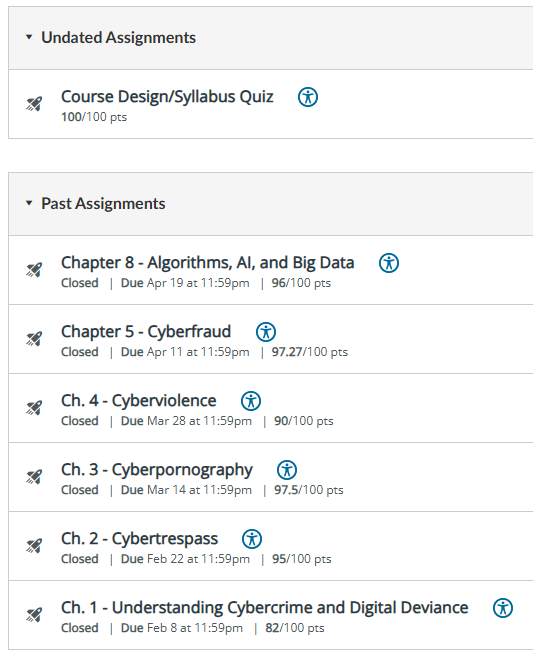Cyber Criminology: Foundations
This course’s primary goal is to introduce students to the basic vocabulary and ideas used by cyber criminologists and other social scientists.
Graham, R. (2023). Criminology Syllabus. Old Dominion University Canvas.
These goals will be met in four ways (Graham, 2023):
- Students will gain a basic understanding of the Internet’s architecture. Students need knowledge of how computers communicate through interconnected networks to understand how many cybercrimes are committed.
- Students will explore the most common types of cybercrimes. Cybercrimes can be roughly divided into four categories – cybertrespass, cyberpornography, cyber violence, and cyber deception.
- Students will critique the significant debates surrounding cybercrime. Society’s understanding of what should be prohibited, how we should investigate, and how we should prosecute cybercrime are continuously being negotiated by groups in society. Our social world is socially constructed, and cybercrime issues are no different.
- Students will connect cybercrimes to broader social impacts relating to individuals and families. While cybersecurity courses may focus more on corporations’ and governments’ concerns and how to protect the data within them, a cybercrime course focuses more on how everyday people are victimized.
Course Material

Cyber criminology is important to cybersecurity because it involves an understanding of the motivations, tactics, and behaviors of cyber criminals. Cybersecurity professionals use this developed understanding to generate exceptional prevention strategies, risk management, and protection, and analyze intelligence to form better security measures.